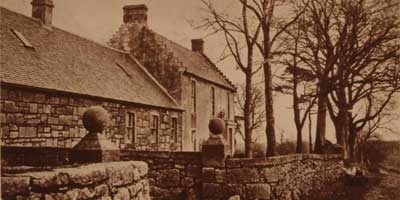Historically, Lanarkshire was the most populous county in Scotland. Up until 1402 it included Renfrewshire. It is to the west of Ayrshire.



By Sir Arthur Porritt, K.C.M.G., C.B.E., F.R.C.S. President, Hunterian Society.
If one proceeds from Glasgow along that very pleasant road up Dychmont Hill (where on a good day views can be had not only of the City and the valley of the Clyde but also of the mountains of Arran, Ben Lomond and even the distant Edinburgh) at about the seventh mile post one arrives at East Kilbride in Lanarkshire. A mile from East Kilbride on the road to Blantyre lies a good stone house of two stories behind which is a fine spacious courtyard surrounded by farm buildings. This is the birthplace of the brothers William and John Hunter "Long Calderwood," still as it has been for generations the nucleus of a prosperous little farm.

